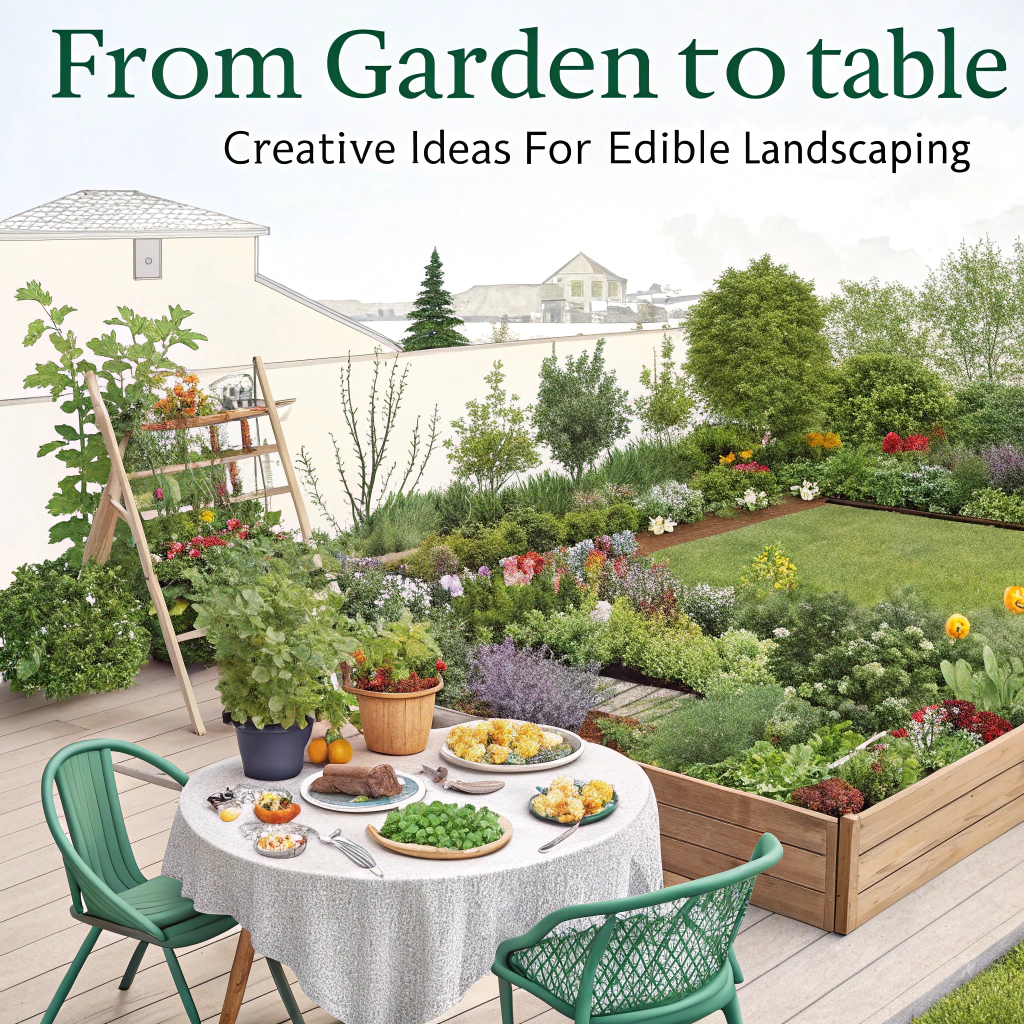In a world increasingly focused on sustainability and healthy living, the concept of edible landscaping is gaining traction. Imagine stepping into your garden and being greeted not just by beautiful flowers and lush greenery, but also by vibrant fruits, vegetables, and herbs that you can harvest and enjoy. This article will explore creative ideas for transforming your outdoor space into a functional and aesthetically pleasing edible landscape. From choosing the right plants to innovative design tips, we’ll cover everything you need to know to make your garden a source of nourishment and beauty.
Why This Topic Is Worth Reading

Edible landscaping is more than just a trend; it’s a lifestyle choice that promotes sustainability, health, and self-sufficiency. By incorporating edible plants into your garden, you can reduce your carbon footprint, save money on groceries, and enjoy the freshest produce right at your doorstep. This article will provide you with practical ideas and inspiration to create a garden that not only looks good but also feeds you and your family.
Moreover, edible landscaping encourages biodiversity and supports local ecosystems. By planting a variety of fruits, vegetables, and herbs, you can attract beneficial insects and pollinators, contributing to a healthier environment. Readers will learn how to blend aesthetics with functionality, making their gardens both beautiful and productive.
Key Highlights or Must-Know Points
- Edible landscaping combines beauty and functionality, allowing you to grow food in an aesthetically pleasing way.
- Choosing the right plants is crucial; consider climate, soil type, and sunlight when selecting edibles.
- Design elements such as raised beds, vertical gardens, and companion planting can enhance both productivity and visual appeal.
- Maintenance tips and seasonal planning are essential for a thriving edible landscape.
Creative Ideas for Edible Landscaping
- Choose the Right Plants: Start by selecting plants that thrive in your local climate. Consider incorporating a mix of perennials like asparagus and rhubarb, along with annuals such as tomatoes and peppers. Herbs like basil, mint, and rosemary can also add flavor and fragrance to your garden.
- Incorporate Vertical Gardening: If space is limited, vertical gardening is an excellent solution. Use trellises, wall planters, or hanging pots to grow climbing plants like cucumbers, peas, and even strawberries. This not only saves space but also adds visual interest to your garden.
- Create Raised Beds: Raised garden beds can improve drainage and soil quality while making it easier to tend to your plants. They can be designed to fit any space and can be filled with nutrient-rich soil to promote healthy growth. Consider using reclaimed wood or stone for a rustic look.
- Use Companion Planting: Certain plants thrive when grown together. For example, planting marigolds alongside vegetables can deter pests, while basil can enhance the flavor of tomatoes. Research companion planting strategies to maximize your garden’s productivity.
- Design with Aesthetics in Mind: Edible plants can be just as beautiful as ornamental ones. Choose colorful varieties of vegetables, such as purple carrots or red-leafed lettuce, and arrange them in patterns or borders to create a visually appealing landscape.
Extra Tips, Notes, or Warnings
- Plan for Seasonal Changes: Different plants have varying growing seasons. Plan your garden layout to include early spring crops, summer vegetables, and fall harvests to ensure a continuous supply of fresh produce.
- Consider Maintenance: While edible landscapes can be low-maintenance, some plants require more care than others. Be realistic about the time you can dedicate to gardening and choose plants accordingly.
- Watch for Pests: Keep an eye out for pests that may target your edible plants. Use organic pest control methods, such as neem oil or insecticidal soap, to protect your garden without harmful chemicals.
Common Questions Answered
What are the best plants for edible landscaping? The best plants depend on your climate and personal preferences. However, popular choices include tomatoes, peppers, herbs, strawberries, and various leafy greens.
Can I grow edible plants in containers? Absolutely! Many edible plants thrive in containers, making them perfect for small spaces or patios. Just ensure the containers have proper drainage and are large enough for the plants’ root systems.
How do I maintain an edible landscape? Regular watering, weeding, and monitoring for pests are essential. Additionally, consider using organic fertilizers to promote healthy growth.
Is edible landscaping expensive? While initial setup costs can vary, growing your own food can save money in the long run. Start small and gradually expand your garden as you gain experience.
Final Thoughts
Edible landscaping is a rewarding way to enhance your outdoor space while promoting sustainability and healthy living. By incorporating edible plants into your garden design, you can create a beautiful and functional environment that nourishes both body and soul. Whether you’re a seasoned gardener or a beginner, the possibilities are endless, and the benefits are profound.
Get Involved
We encourage you to explore the world of edible landscaping and start your own garden journey today! Share your experiences, ask questions, or leave feedback in the comments below. For more wonderful content on gardening and sustainable living, visit Mind of Griff.
Leave a Reply